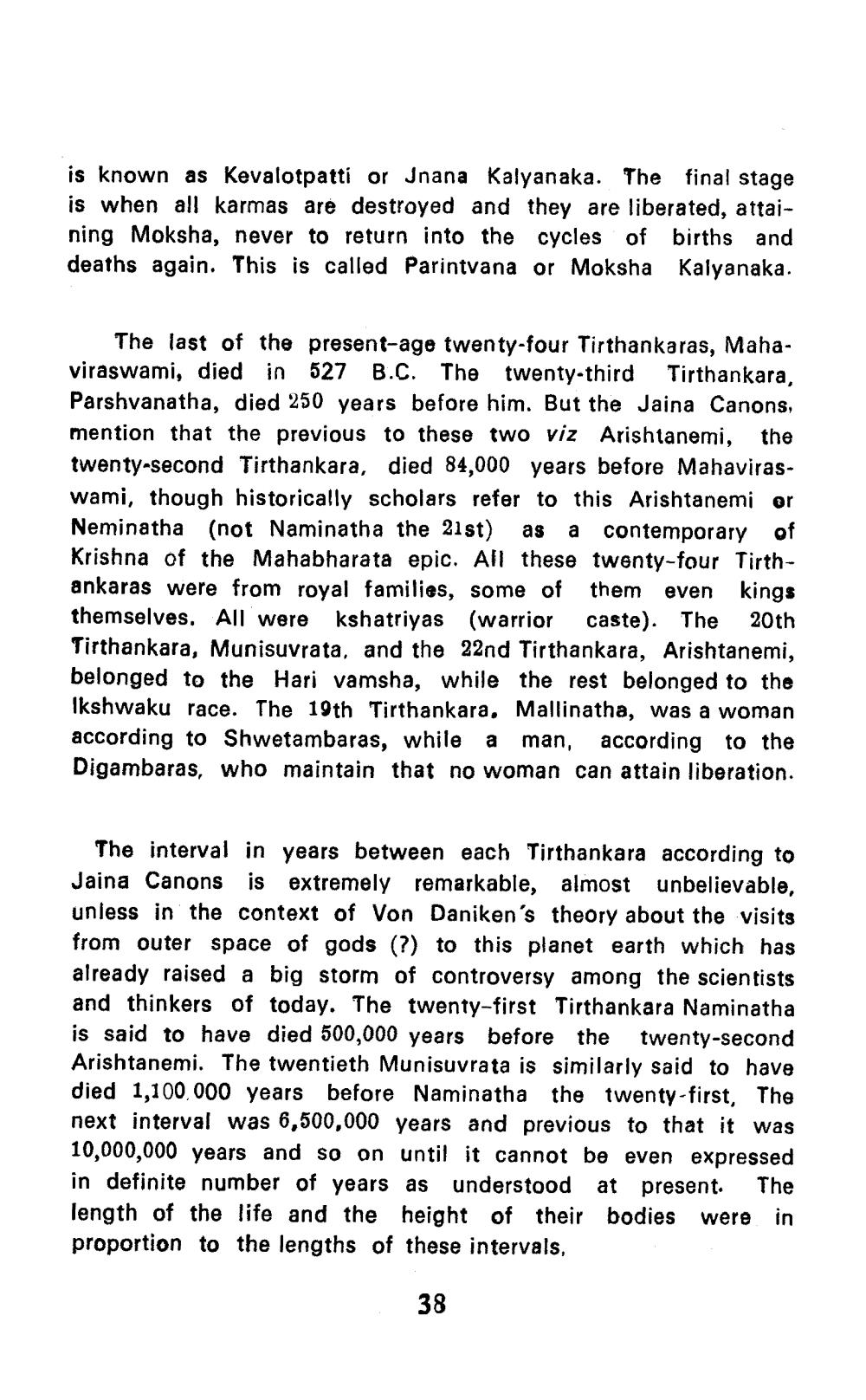________________
is known as Kevalotpatti or Jnana Kalyanaka. The final stage is when all karmas are destroyed and they are liberated, attaining Moksha, never to return into the cycles of births and deaths again. This is called Parintvana or Moksha Kalyanaka.
The last of the present-age twenty-four Tirthankaras, Mahaviraswami, died in 527 B.C. The twenty-third Tirthankara, Parshvanatha, died 250 years before him. But the Jaina Canons, mention that the previous to these two viz Arishtanemi, the twenty-second Tirthankara, died 84,000 years before Mahaviraswami, though historically scholars refer to this Arishtanemi or Neminatha (not Naminatha the 21st) as a contemporary of Krishna of the Mahabharata epic. All these twenty-four Tirthankaras were from royal families, some of them even kings themselves. All were kshatriyas (warrior caste). The 20th Tirthankara, Munisuvrata, and the 22nd Tirthankara, Arishtanemi, belonged to the Hari vamsha, while the rest belonged to the Ikshwaku race. The 19th Tirthankara, Mallinatha, was a woman according to Shwetambaras, while a man, according to the Digambaras, who maintain that no woman can attain liberation.
The interval in years between each Tirthankara according to Jaina Canons is extremely remarkable, almost unbelievable, unless in the context of Von Daniken's theory about the visits from outer space of gods (?) to this planet earth which has already raised a big storm of controversy among the scientists and thinkers of today. The twenty-first Tirthankara Naminatha is said to have died 500,000 years before the twenty-second Arishtanemi. The twentieth Munisuvrata is similarly said to have died 1,100,000 years before Naminatha the twenty-first, The next interval was 6,500,000 years and previous to that it was 10,000,000 years and so on until it cannot be even expressed in definite number of years as understood at present. The length of the life and the height of their bodies were in proportion to the lengths of these intervals,
38




